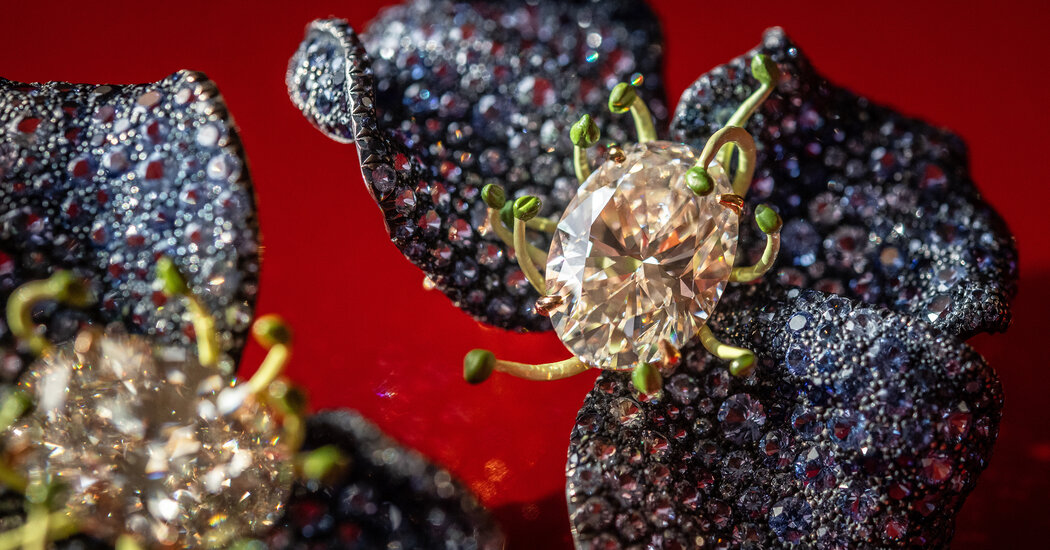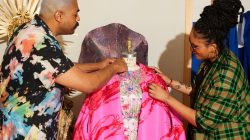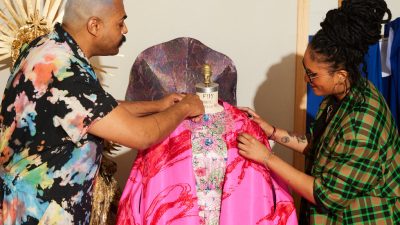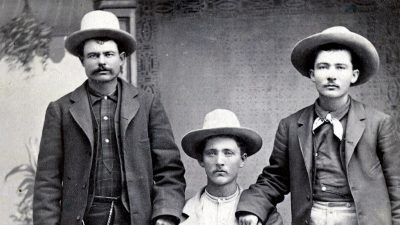PARIS — The couture calendar is filled with shows by renowned houses and newcomers alike this week, but the jewelry presentations that traditionally round out this semiannual showcase of luxury savoir-faire are much less in evidence.
Several prominent houses, including Van Cleef & Arpels and Piaget, are sitting out the season while Bulgari plans to celebrate the 75th anniversary of its Serpenti design in May with a presentation in Italy.
Industry observers have said that, given the current global geopolitical and financial uncertainty, the brands’ decision to temporize may be a strategic play. “I think it’s fair to anticipate that the USA demand may be moderating,” Luca Solca, a luxury analyst with the research firm Sanford C. Bernstein, wrote in an email. “By contrast, my understanding is that the Chinese market is rebounding very fast.”
But fashion houses like Chanel, Dior and Louis Vuitton took the opportunity to render couture materials and techniques in jewel form this season.
Embroidery techniques used in Chanel’s métiers d’art subsidiaries inspired five one-of-a-kind jeweled watches for the Mademoiselle Privé collection. Named Pique-Aiguilles (in English, pincushion), the watches have hands shaped like sewing needles; oversized 55-millimeter dials decorated with house hallmarks, like its classic bouclé jacket outlined in diamonds with tiny gold scissors at 9 o’clock; and are covered with a sapphire crystal dome.
At Dior, Victoire de Castellane, the creative director of jewelry, nodded to the house’s roots by reinterpreting lace, an association she introduced a decade ago in a collection called Dear Dior and returned to in 2018 with Dior Dior Dior. Her latest collection, called Dearest Dior, comprises 75 jewels and two one-of-a-kind watches. Lacelike grillwork in an alloy of rose gold and platinum gave one parure the look of vintage gold, accented with large rose-cut diamonds.
The elegance of lace and transparency of mesh also appears in the second chapter of the Spirit collection by Francesca Amfitheatrof, artistic director of watches and jewelry for Louis Vuitton. The latticework Destiny bracelet, for example, includes more than 100 bezel-set diamonds and is anchored by a 4.05-carat emerald-cut pigeon-blood ruby from Mozambique flanked by diamonds in the two new LV Monogram cuts, Star and Flower. The brand said the piece took 650 hours to make.
In a slightly different spirit, fashion also inspired Like a Queen, Boucheron’s newest Histoire de Style collection. It comprises 18 variations on a pair of aquamarine and diamond Art Deco brooches that the house designed in 1937 and was given to Princess Elizabeth, the future queen of England, for her 18th birthday in 1944.
“This is the first time we’ve started with a single motif and revisited it in different ways, like an obsession,” Claire Choisne, Boucheron’s creative director, wrote in an email. One of the pieces — the Rolling Red pendant necklace set with 1,027 diamonds and 17 Mozambique rubies — also can be worn on as a brooch.
In the third chapter of Cartier’s Beautés du Monde collection, a supple bib necklace was designed as an abstraction of a fighting fish’s fin, a new addition to the house’s bestiary. It was made of diamonds and red spinel, with each bead affixed by a tiny nail, designed to mimic the shimmering effect that a fish’s scales make as it moves through water.
The Indies
For independent designers, breaking out in the world of high jewelry is notoriously difficult. Even so, some do attract a wealthy clientele looking for something a little bit different.
“Niche brands are clearly not a ‘first purchase’ for any consumer but can be the nth purchase for consumers who already have a lot and are in the market for something very special,” Mr. Solca of Bernstein wrote. For such designers, “being original and having a distinct ‘reason why’ is vital.”
Here is a look at four such independents.
Marc Auclert
For Marc Auclert, modernity goes hand-in-hand with the past. Twelve years ago, armed with 15 years of experience in the high jewelry department at Chanel, as well as stints at De Beers in Tokyo and Sotheby’s gem department in Paris, he set about turning the antique curios he loves — ancient coins, prehistoric beads, delicate intaglios — into one-of-a-kind jewels.
In his tiny, tidy boutique on Rue de Castiglione, recent arrivals included a ring mounted with a broken coin dating to the third century B.C. and bearing the profile of the Macedonian general Lysimachus, an heir to Alexander the Great. Mr. Auclert worked with his jewelry atelier — drawing on the traditional Japanese technique of kintsugi, which accentuates the fractures in cracked pottery with powdered gold or other precious metals — to fill a missing section of the coin with white gold and diamonds.
His biggest challenge, he said, has been finding artifacts that are “beautiful, genuine and jewel-able.” But he also designs curio-free pieces, like double-spiral earrings set with four oval gems (sapphire, citrine, tourmaline and spinel) and diamonds.
Charlotte Chesnais
In 2016, a year after introducing her namesake fashion jewelry brand, Charlotte Chesnais received her first request for a custom-made piece: A friend wanted a 4-carat diamond from an heirloom ring repurposed in a new engagement ring.
Ms. Chesnais designed the gem into a high jewelry variation of her Ellipse design. When it was finished, the artisan who completed the piece asked her to come and get it right away because the diamond was so valuable.
“Neither the client nor I had realized the stone was worth 300,000 euros,” she said. “So my introduction to high jewelry was sitting on my bicycle in the middle of Paris with this ring, insisting that he come and meet me immediately.”
She now creates about 20 bespoke jewels a year, including her double-finger Heart ring with a 2.5-carat diamond that appears to float in the middle. Earlier this month, Ms. Chesnais opened her second Paris boutique, on Boulevard St.-Germain; it has a private salon for consultations.
Emmanuel Tarpin
Emmanuel Tarpin, who arrived on the Paris jewelry scene in late 2017 at the age of 25, now focuses exclusively on unique pieces, producing about 30 a year. Two recent designs put precious materials in camouflage: the Winter Acorn brooch, made of blackened gold with a woodlike patina, white gold and tiny diamonds, and a Black Ant pin in matte blackened gold set with a diamond that also can be worn as an earring.
“I like giving certain pieces a touch of humor because I find that the high jewelry world often takes itself too seriously,” Mr. Tarpin said. “I think you can work with noble materials and have perfection in execution while keeping things light and fun.”
The designer said he now was focused on learning about the gem trade. In November, he spent 10 days visiting opal mines in Mexico, and this summer, he said, he plans to visit an emerald mine in Colombia.
Cindy Chao
Although she is not based in Paris, the Taiwanese designer Cindy Chao says she considers herself a little bit French. She has presented her jewelry during the couture collections since 2015; was named a Chevalier, or knight, in France’s Ordre des Arts et des Lettres in 2021; and is planning to open a Paris showroom in the next year or so.
In Paris this season, Ms. Chao is presenting a selection of 12 jewels made from 2015 through 2022, including the Mystère de la Nuit rose earrings from her Black Label Masterpiece collection. Their structure, in titanium and oxidized silver, was fully pavéd with emeralds and sapphires, while each stamen was made of 18-karat gold coated in French lacquer.
Perhaps best known for her annual butterfly brooch, a one-of-a-kind piece in titanium and gemstones, she also has been experimenting with a silver and titanium blend for several years to create jewels that “retain the visual effect while remaining wearable, durable and lightweight,” Ms. Chao wrote in an email, noting that the waiting list for the annual brooch now stretches to 2027.
Sumber: www.nytimes.com










